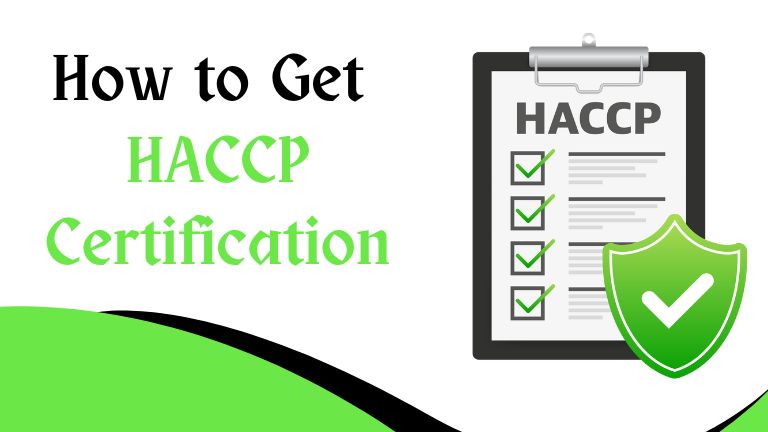1. Enhanced Food Safety: HACCP systems
focus on risk management, reducing the likelihood of foodborne illnesses.
2. Regulatory Compliance: Many countries
and regions require food businesses to comply with HACCP principles.
3. Market Access: Certification can
enhance marketability, opening doors to international trade.
4. Consumer Trust: A HACCP-certified
label assures customers of your commitment to safety.
5. Operational Efficiency: Establishing a
HACCP plan often leads to more organized and efficient processes.
Step-by-Step Process to Get HACCP Certification
Step 1: Understanding the Requirements
Before
you begin the certification process, familiarize yourself with the HACCP
principles and guidelines. The Codex Alimentarius Commission provides a
detailed framework for implementing HACCP. This includes:
1. Conducting
a hazard analysis.
2. Determining
Critical Control Points (CCPs).
3. Establishing
critical limits for each CCP.
4. Implementing
monitoring procedures.
5. Establishing
corrective actions.
6. Creating
record-keeping procedures.
7. Developing
verification procedures.
Step 2: Establish a HACCP Team
Creating
a dedicated HACCP team is essential for successfully developing and
implementing a HACCP plan. The team should include individuals from various
departments, such as production, quality assurance, and management. Team
members should have a good understanding of food safety principles and the
specific processes of your operation.
Step 3: Conduct a Hazard Analysis
The
next step is to conduct a thorough hazard analysis. This involves identifying
potential biological, chemical, and physical hazards that could occur at each
stage of food production. The analysis should also consider:
- The
potential severity of each hazard.
- The
likelihood of occurrence.
- Existing
control measures in place.
This
information will help you prioritize which hazards require immediate attention
and management.
Step 4: Determine Critical Control Points (CCPs)
After
identifying potential hazards, the next step is to determine the Critical
Control Points (CCPs) in your process. CCPs are stages where control measures
can be applied to prevent, eliminate, or reduce hazards to an acceptable level.
Common examples of CCPs include cooking, cooling, and storage processes.
Step 5: Establish Critical Limits
For
each CCP, establish critical limits that must be met to ensure food safety.
These limits can be based on regulatory standards, scientific literature, or
industry best practices. Critical limits may include:
- Maximum
cooking temperatures.
- Minimum
refrigeration temperatures.
- Time
constraints for food holding or storage.
Step 6: Monitoring Procedures
Develop
monitoring procedures to ensure that each CCP is consistently maintained within
the established critical limits. This can involve regular measurements and
observations, such as temperature checks or visual inspections. Documentation
of monitoring activities is crucial for maintaining compliance and for any
future audits.
Step 7: Corrective Actions
Define
corrective actions that will be taken if monitoring indicates that a critical
limit has not been met. This could involve adjusting cooking times,
re-evaluating storage conditions, or discarding affected products. The goal is
to prevent unsafe food from reaching consumers.
Step 8: Record Keeping
Thorough
record-keeping is essential in the HACCP system. Maintaining accurate
documentation of hazard analyses, monitoring activities, and corrective actions
not only demonstrates compliance but also serves as a reference for future
audits. Records should be clear and accessible.
Step 9: Verification Procedures
Verification
is the process of confirming that your HACCP plan is working effectively. This
can involve:
- Conducting
internal audits.
- Reviewing
monitoring records.
- Reassessing
the hazard analysis and CCPs periodically.
- Bringing
in external auditors for a third-party assessment.
Step 10: Training Staff
Educating
your staff on HACCP principles and procedures is vital. Training ensures that
everyone involved in food production understands their roles and
responsibilities in maintaining food safety. Regular training updates can help
keep the team informed about any changes or improvements made to the HACCP
plan.
Step 11: Certification Audit
Once
your HACCP plan is implemented, it’s time to seek certification. Choose a
credible certifying body that is recognized in your industry. The certification
process typically involves an initial audit to assess compliance with your
HACCP plan and relevant food safety standards. Be prepared to provide
documentation and evidence of implementation.
Conclusion
Obtaining
HACCP certification is an essential step towards ensuring food safety and
quality in your business. By following these steps and implementing a robust
HACCP plan, you not only comply with regulatory requirements but also cultivate
a culture of food safety that protects consumers and enhances your brand's
reputation in the marketplace. Through dedication and compliance, you can
confidently achieve HACCP certification and maintain high food safety standards
within your organization.
If you need any help regarding any kinds of FSSAI Registration ya HACCP Certificate feel free to contact us our Toll Free number 180030702070, Our Business advisor will explain you in details.
Also Read Some Popular Articles
